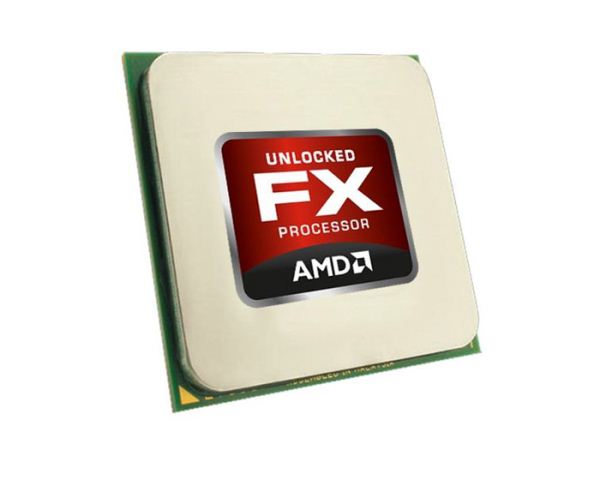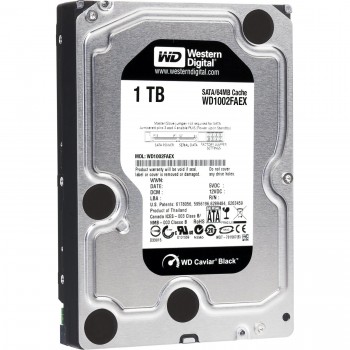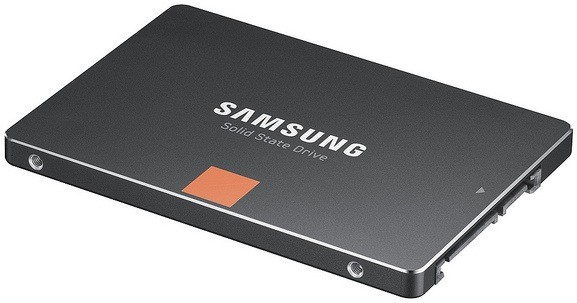Holiday 2012 Workstation Buyer's Guide
by Zach Throckmorton on December 10, 2012 3:20 AM EST- Posted in
- Guides
- AMD
- Intel
- Ivy Bridge
- Piledriver
- Holiday 2012
AMD workstation
 Anand thoroughly reviewed AMD's latest Piledriver-based "Vishera" CPUs upon their launch a few months ago. Priced at $130, the FX-6300 hex-core model costs about as much as Intel's Ivy Bridge-based Core i3-3220. In terms of real-world workstation application performance (the details of which are presented in Anand's review), the FX-6300 bests the i3-3220 in a variety of tasks: Monte Carlo simulations in Microsoft Excel, multi-threaded video editing, software compilation in Visual Studio, and multi-threaded integer workloads such as those used in file compression/decompression. Compared to the i3-3220, the FX-6300's major weakness is its higher power consumption—under load the AMD chip pulls almost twice as much power as Intel's Ivy Bridge-based juice sipper (though in terms of absolute power, we're talking about less than 100W more). That said, Depending on what you're doing with your work computer, the FX-6300 is a relatively inexpensive option worthy of your consideration. You can see a detailed comparison of the FX-6300 to the i3-3220 in CPU Bench.
Anand thoroughly reviewed AMD's latest Piledriver-based "Vishera" CPUs upon their launch a few months ago. Priced at $130, the FX-6300 hex-core model costs about as much as Intel's Ivy Bridge-based Core i3-3220. In terms of real-world workstation application performance (the details of which are presented in Anand's review), the FX-6300 bests the i3-3220 in a variety of tasks: Monte Carlo simulations in Microsoft Excel, multi-threaded video editing, software compilation in Visual Studio, and multi-threaded integer workloads such as those used in file compression/decompression. Compared to the i3-3220, the FX-6300's major weakness is its higher power consumption—under load the AMD chip pulls almost twice as much power as Intel's Ivy Bridge-based juice sipper (though in terms of absolute power, we're talking about less than 100W more). That said, Depending on what you're doing with your work computer, the FX-6300 is a relatively inexpensive option worthy of your consideration. You can see a detailed comparison of the FX-6300 to the i3-3220 in CPU Bench.
ASRock's 970 Extreme3 AM3+ ATX motherboard is a straightforward, fully-featured product that, in my experience, is quite reliable. It offers plenty of expandability for peripherals with its two PCIe x1 and two PCI lanes, and users interested in GPGPU computing will find two PCIe X16 lanes (though when both are populated, one runs at x16 and the other at x4). We're pairing this board with a 16GB kit of basic DDR3-1600 from Corsair, consisting of two 8GB sticks. This leaves two slots open for an easy, drop-in upgrade to 32GB if you deem that a wise use of your money.
 Regarding storage, two of the most reliable products on the market get the nod—Intel's 520 Series 120GB SSD and Western Digital's 1TB Black HDD. Both carry five year warranties from their manufacturers, whereas most SSDs and HDDs carry two- or three-year warranties. The combination of a fast OS and application SSD with a fast, high capacity HDD is a good general solution for most workflows; you might be better off with a single large SSD, or your work might be more cost effectively completed with a tiny SSD (like Intel's 520 Series 60GB) and multiple larger, slower hard drives (like Western Digital's Green 2TB). And of course, don't forget external backup storage!
Regarding storage, two of the most reliable products on the market get the nod—Intel's 520 Series 120GB SSD and Western Digital's 1TB Black HDD. Both carry five year warranties from their manufacturers, whereas most SSDs and HDDs carry two- or three-year warranties. The combination of a fast OS and application SSD with a fast, high capacity HDD is a good general solution for most workflows; you might be better off with a single large SSD, or your work might be more cost effectively completed with a tiny SSD (like Intel's 520 Series 60GB) and multiple larger, slower hard drives (like Western Digital's Green 2TB). And of course, don't forget external backup storage!
BitFenix's Ghost gets our nomination to house everything. Dustin reviewed this sleek-looking case recently, and like him, I've enjoyed building systems in this case. Its thermals are more than up to the task of cooling a higher TDP CPU like the FX-6300. Keep in mind that all of our case suggestions in this buyer's guide are interchangeable, so if you happen to like a case detailed in another build, you can certainly put these parts in that case. Powering everything, we have Antec's Earthwatts 380W. Though Antec has switched OEMs over the course of this product's history, I have now installed this model into over 100 systems in the last few years, and one has failed. In other words, it's about as reliable as a low-cost, mainstream PSU comes.
Finally, this build includes a copy of Windows 7 Professional 64-bit. You can get an overview of the differences between Windows versions at Microsoft and Wikipedia. Some of the more relevant and important differences between Professional and Home Premium are the former's support for more than 16GB of RAM, Windows XP mode, domain join, and integrated backup and restore features.
| Component | Product | Price | Rebate |
| Case | BitFenix Ghost | $100 | |
| Power supply | Antec Earthwatts 380W | $45 | |
| CPU | AMD FX-6300 | $140 | |
| Motherboard | ASRock 970 Extreme3 AM3+ ATX | $85 | |
| RAM | 16GB Corsair Value Select DDR3-1600 | $60 | |
| SSD | Intel 520 Series 120GB | $130 | |
| Hard drive | Western Digital Black 1TB | $110 | |
| Graphics card | Sapphire Radeon HD 5450 1GB | $35 | -$15 |
| Optical drive | Lite-On iHAS124-04 | $18 | |
| Operating system | Windows 7 Professional 64-bit | $137 | |
| Total: | $860 | $845 |
Intel workstation
I consider the next tier up from the AMD FX-6300/Intel Core i3-3220, in terms of workstation productivity, to be the AMD FX-8350/Intel Core i5-3570 tranche. At this price, however, the pendulum swings closer to Intel's CPU—largely because the AMD FX-8350 uses about 100W more under load to sometimes accomplish less actual computational work. That said, be sure to read how the FX-8350 compares to the Core i5-3570; if the AMD chip will be better for your workloads (despite its electrical gluttony), you can use it instead of the FX-6300 in the build above. If your workloads benefit from Hyper-Threading, you should consider stepping up from the Core i5-3570 to the Core i7-3770. You can see how the two Intel CPUs compare once again in CPU Bench.
 Like the AMD FX-6300 workstation detailed above, we're including 16GB for this workstation. The ASUS P8B75-V is a reliable B75 chipset-based board with plenty of room for expansion (such as drop-in expansion to 32GB of RAM). Both PCIe lanes are able to function at x16, though one is a PCIe 2.0 slot and the other is a PCIe 3.0 slot (not that this distinction is particularly important at this point in time). Perhaps the only drawback to the B75 chipset is that it has only one SATA III port, though if you have only one SATA III SSD, this is not an issue.
Like the AMD FX-6300 workstation detailed above, we're including 16GB for this workstation. The ASUS P8B75-V is a reliable B75 chipset-based board with plenty of room for expansion (such as drop-in expansion to 32GB of RAM). Both PCIe lanes are able to function at x16, though one is a PCIe 2.0 slot and the other is a PCIe 3.0 slot (not that this distinction is particularly important at this point in time). Perhaps the only drawback to the B75 chipset is that it has only one SATA III port, though if you have only one SATA III SSD, this is not an issue.
For storage, we're recommending the Samsung 840 Pro. If you follow Anand's SSD reviews, we noted the pre-production firmware resulted in dead drives, but that the production firmware appears to have corrected this issue. Given the track record of the Samsung 830, I have no reservations recommending the 840 Pro for production systems. We're also stepping up the storage capacity with a 2TB rather than 1TB Western Digital Black platter-based drive for this system; though again, only you know how much storage you'll need for your workloads.
I've recommended the Fractal Design Define R4 before, and continue to use it extensively for custom builds. Its combination of good thermals, excellent acoustics, and slick looks make for a very compelling $100 case. Finally, the Seasonic S12II series has an outstanding reputation for supplying clean, reliable power, and the 430W version provides enough juice for the build detailed below as well as any single GPU graphics card on the market, if you're interested in GPGPU computing.
| Component | Product | Price |
| Case | Fractal Design Define R4 | $110 |
| Power supply | Seasonic S12II 430B | $60 |
| CPU | Intel Core i5-3570 | $215 |
| CPU alternate | Intel Core i7-3770 | $300 |
| Motherboard | ASUS P8B75-V B75 ATX | $90 |
| RAM | 16GB Corsair Value Select DDR3-1600 | $60 |
| SSD | Samsung 840 Pro 128GB | $150 |
| Hard drive | Western Digital Black 2TB | $180 |
| Optical drive | Lite-On iHAS124-04 | $18 |
| Operating system | Windows 7 Professional 64-bit | $137 |
| Total (with i5-3570): | $1,020 | |
| Total (with i7-3770): | $1,105 |
On the next page, we step up to a Sandy Bridge E-based workstation.










49 Comments
View All Comments
Blibbax - Monday, December 10, 2012 - link
What made you pick the i7-3770 over the cheaper Xeon E3-1230V2?stickmansam - Monday, December 10, 2012 - link
Yeah I was wondering about that tooslatanek - Monday, December 10, 2012 - link
From what I read on the 1st page of this guide I understand it's a guide focused on consumer/enthusiast grade workstation where your work is not involved in serious money/critical appliances. I mean, c'mon guys is that so hard to get? It's written right there in the introduction. So stop just outsmarting each other out with statements about what is and isn't a workstation. Nowadays a workstation doesn't even mean that much - what is that different in a modern workstation vs. enthusiast PC? Frankly, not much. It's basically the same architecture, layout etc. As I've said before - go and read again, it's written right there:"If your computer is more than important (i.e. mission critical), DIY is rarely a good idea."
Am I the only one who read the whole article before posting a comment? I get the impression that some of you just looked at the components choice lists and went on trolling.
As a reply I say:
"anything that runs ECC is not worth writing about, cause guys using those "things" are too focused on their job to even bother reading about it".
Nah, just kidding ;-)
Cheers
JonnyDough - Monday, December 10, 2012 - link
"Though Piledriver chips don't match Intel's highest-end performance processors, at certain price points, Piledriver CPUs are worth consideration because they can outperform equivalently priced Intel products (with a few qualifications)."However, the difference in power usage may make the Intel system still a better deal.
beaker7 - Monday, December 10, 2012 - link
Cupcake article. The parts in the high end build are neither high-end nor workstation class. A 3930k could be used in a budget situation, I suppose.Current high end is:
E5-2687w Xeons
SuperMicro dual LGA 2011
1600 Mhz ECC RAM
etc
lunadesign - Friday, December 14, 2012 - link
+1000 (I totally agree)Uncognoscenti - Wednesday, December 12, 2012 - link
Would appreciate some elaboration regarding criteria for selecting Windows 7 over Windows 8 in this application.kadajawi - Wednesday, December 19, 2012 - link
I find it hard to believe that you do not specify a CPU cooler in that build. The Intel stock heatsink is loud, and sometimes even inadequate. I have had i7 overheat/slow down because the CPU just gets too hot. Switched it with a Xigmatek Gaia, and the thing was not only silent, but also so cool that the thing could be overclocked from 2.66 to 3.8 GHz (I did also switch the lousy case for a Xigmatek case).Also the 3570K can be an interesting CPU for a workstation. All 3D workstations I have built use the 3570K on a Z77 board by Asus (P8Z77-M), cooling is provided by a CoolerMaster 212 EVO, encased in a Xigmatek Asgard XP, power supply is a Seasonic S12-II Bronze 620 (one of which died within a few months). The systems run pretty good and are rock solid at 4.2 GHz. For OS and software the Intel 320 SSD was used. Impossible to hear unless under full load. The performance easily rivals the i7 PCs that were already there.
harth234 - Friday, August 9, 2013 - link
More guides please!It's been half a year!